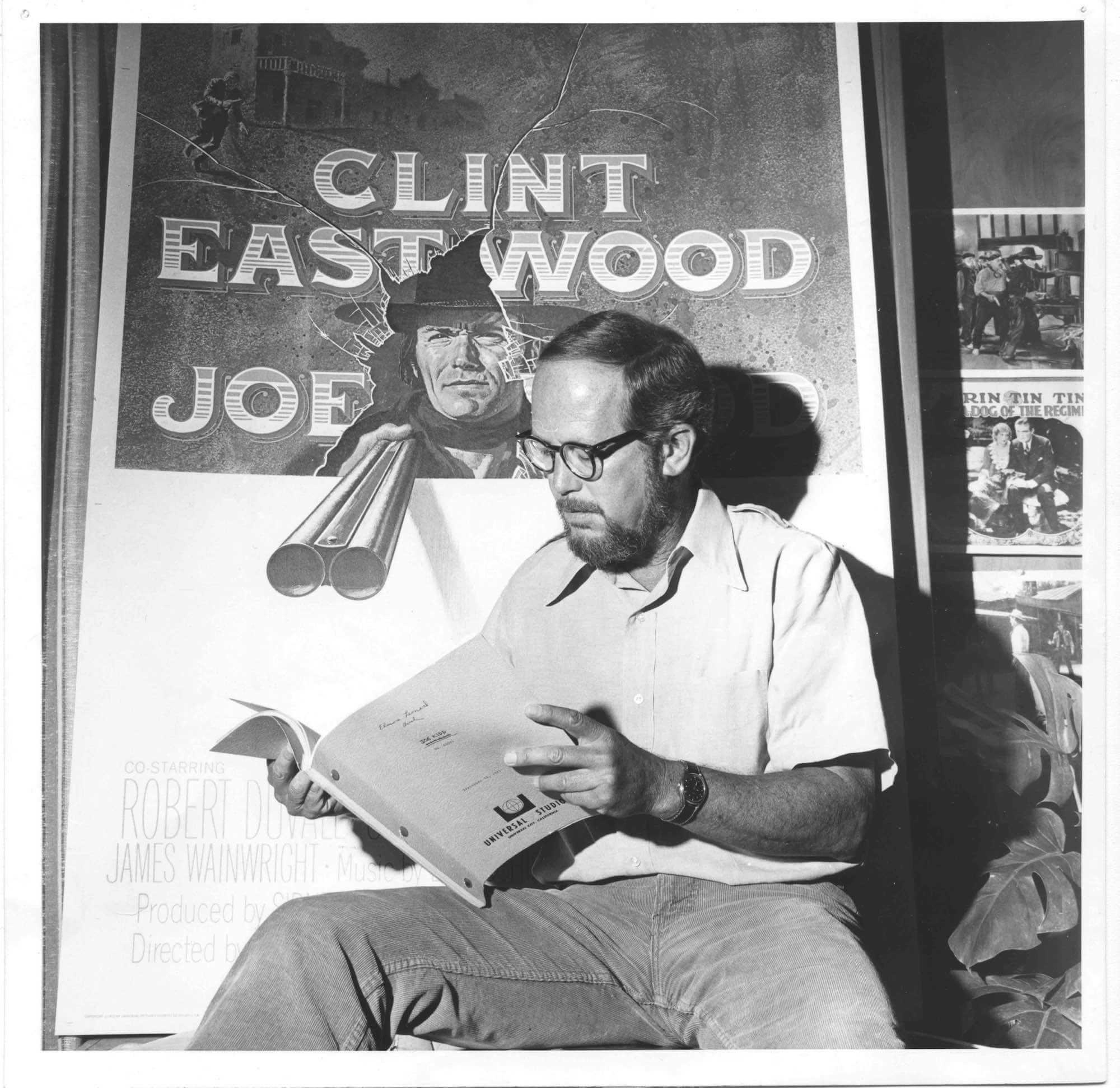1820 Industrial Street
Los Angeles, CA 90021
Elmore Leonard in Hollywood
Come take a time travel trip through Elmore Leonard’s Hollywood, in a new bus adventure hosted by Gregg Sutter, the writer’s loyal assistant and researcher of 33 years. You’ll get the skinny on Elmore’s great Hollywood novel turned film Get Shorty, meet the real life inspiration for Chili Palmer, trace Elmore’s evolution as a commuting screenwriter and visit the locations that inspired some of his most memorable scenes.
Whether you’re an Elmore Leonard super-fan or just love Get Shorty and Jackie Brown, you’ll dig this affectionate tour celebrating a most unusual Hollywood career and some of the colorful characters who Elmore Leonard encountered while working on this coast. The cast includes: Randolph Scott, Felicia Farr, Glenn Ford, Van Heflin, Paul Newman, Martin Ritt, Ryan O’Neal, Burt Lancaster, Clint Eastwood, Steve McQueen, Charles Bronson, Menahem Golan, Sean Connery, Dustin Hoffman, Bruce Willis, Martin Scorsese, Quentin Tarantino, John Travolta, Danny Devito, George Clooney, Jennifer Lopez, Robert Deniro, James Woods, Bridget Fonda, Michael Keaton and Dennis Farina.
ABOUT ELMORE LEONARD IN HOLLYWOOD
Fans and critics know Elmore Leonard as a hard-working western and crime writer who, in 63 years, wrote 45 novels and 40 short stories. Lesser known is his career as a Hollywood screenwriter. Over two decades, beginning in 1969, Elmore wrote two dozen screenplays for producers and studios. He would adapt his own work and write original scripts for film and television. Often, the lines between novel and screenplay were blurred. But Elmore’s goal remained clear: get the Hollywood money to support his novel writing back home in Detroit.
Elmore had a legendary Hollywood agent–H.N. “Swanie” Swanson–who aggressively pitched his stories to big name actors and producers. But Elmore soon learned that once Hollywood bought his work, the stories often came out mangled beyond recognition, even when he was adapting them himself. There were too many people involved with the power to cross out his words for their own.
Elmore’s novels read like movies already; written in scenes, with vivid characters and shifting points of view. Producers loved this, and snapped up nearly everything he wrote. But their efforts to bring Elmore’s novels to the screen often lost the very elements that they’d found so appealing. As screenwriters adapting his work learned, you change Elmore Leonard at your peril. As for Elmore, he learned to settle for the big Hollywood “blood money” and be content that his books lived on the shelf, just as he’d written them.
As his book sales took off in the mid-1980s, Elmore no longer relied on Hollywood screenwriting work. He quit the screen trade for good in 1993. But as was often the case, Elmore relied on his own experiences for inspiration. So in 1988, when he began work on a new novel, he set it in Hollywood. The result was Get Shorty (1990), a novel told from the point of view of Chili Palmer, a Miami loan shark and gangster who becomes a Hollywood producer. It was a good natured jab at the industry that had fed Elmore for all those years. In 1995, the film version of Get Shorty starring John Travolta, Danny Devito and Gene Hackman was #1 at the box office.
With Get Shorty, Hollywood finally “got” Elmore Leonard’s tone and attitude on film, thanks to the combined efforts of director Barry Sonnenfeld and screenwriter Scott Frank. They ushered in a mini golden age, with Get Shorty (1995), Jackie Brown (1997) and Out of Sight (1998.). It’s through the lens of period that we’ll tell the fascinating story of Elmore Leonard in Hollywood, how twenty years of hard work in the screenwriting trenches contributed greatly to his ability to kick back and write his books, which is all Elmore Leonard ever wanted to do.
ABOUT TOUR HOST GREGG SUTTER
Gregg Sutter first met Elmore Leonard in the summer of 1979 in Birmingham, Michigan. Sutter and his friend Russell Rein shared an interest in hard-boiled American fiction and the film noir. They planned to publish a zine called Noir with an Elmore Leonard interview in the first issue. The zine never happened, but in January 1981 Leonard called Sutter and asked if he wanted to do research for him on a controversial program of the Detroit Police Department. Sutter said yes. Over the next 33 years, Sutter would visit many locations to do research for Leonard’s bestsellers: from Cape Girardeau, Missouri to Havana, Cuba and Rapallo, Italy. Sutter was profiled in The New Yorker in 1996 for his research work. In 2004, he was editor for The Complete Western Stories of Elmore Leonard, wrote the introduction and found a long lost story. In 2007, Sutter produced the illustrated book of Elmore Leonard’s 10 Rules of Writing with illustrations by Joe Ciardiello. Most recently, Sutter was editor on The Classic Crime Novels of Elmore Leonard, a Library of America three-volume, twelve-novel set. Today, Sutter lives in Los Angeles and continues to research the life and career of Elmore Leonard.
